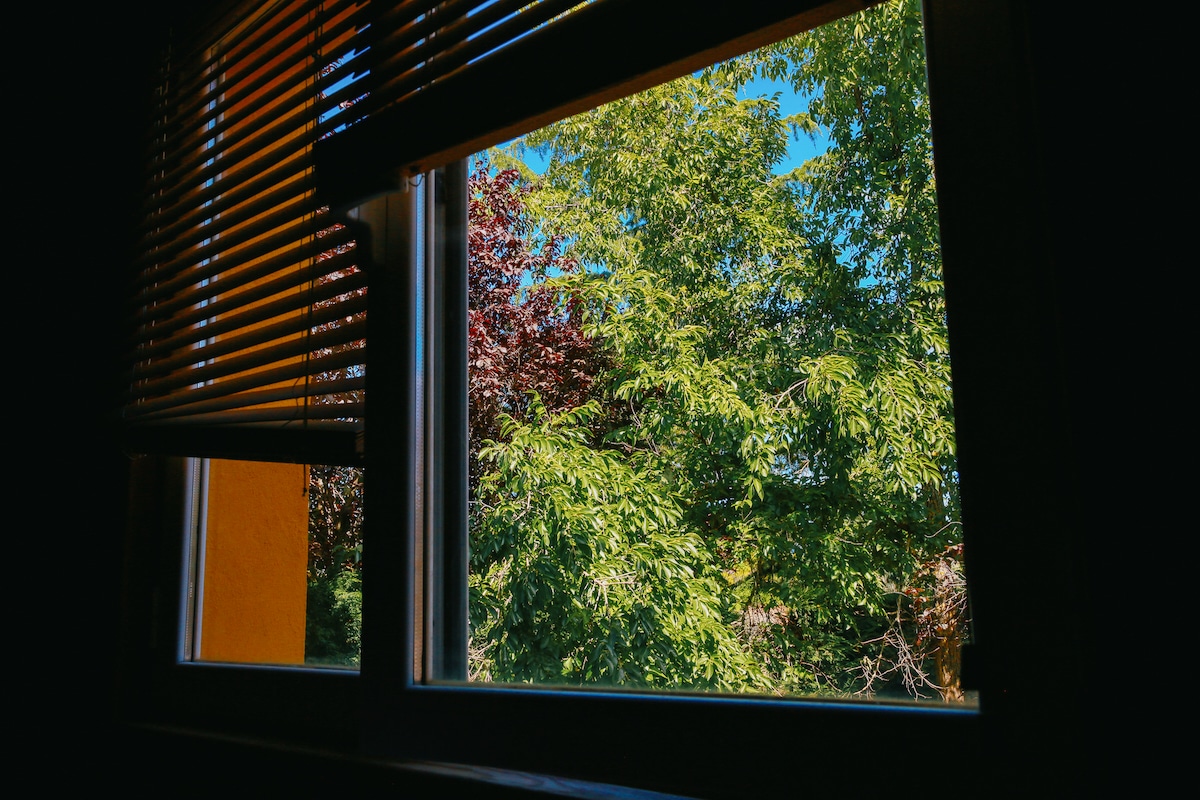Ecowatch
People With Views of Greenery or Water at Home Get Better Sleep, New Global Study Finds

Trees seen from a bedroom window in Spain. Alexey Bakharev / iStock / Getty Images Plus

Why you can trust us
Founded in 2005 as an Ohio-based environmental newspaper, EcoWatch is a digital platform dedicated to publishing quality, science-based content on environmental issues, causes, and solutions.
The maple tree outside your bedroom window may be a pretty sight to see first thing in the morning, but it could also be helping you get a good night’s sleep, according to new research.
A global study conducted in 18 countries found a link between people who live within view of a green street or blue spaces and better, longer sleep. The study analyzed six different types of nature exposure to what is considered insufficient sleep, or fewer than six hours of sleep in a night, for more than 16,000 people.
The six types of nature exposure considered in the study included streetscape greenery, views of blue space from home, green space within one kilometer of the home, coast within one kilometer of the home, visits to green spaces and visits to blue spaces.
The researchers did not find that green space or coast within one kilometer of the home had any significant effect on insufficient sleep, but they did find that streetscape greenery and visible blue spaces as well as visits to green and blue spaces both were associated with fewer cases of insufficient sleep.
“People that lived in greener streets reported better mental health, which was the driving factor behind getting a better night’s sleep,” Dr. Leanne Martin, lead author of the study and a lecturer and postdoctoral research associate at the University of Exeter’s European Centre for Environment and Human Health, said in a statement. “Streetscape greening initiatives already exist in urban cities to tackle environmental risks like flooding and heat island effects, but our findings suggest policymakers should extend that to residential areas to support public health by promoting healthier sleep habits.”
In total, the study found that only about 17% of people who had streetscape greenery experienced insufficient sleep, while 22% of people without streetscape greenery did not get enough sleep. The results were published in the journal Environmental Research.
“Whilst a five percent difference may seem small, these findings are comparable to the difference in sleep between people who are coping on their present income and those under financial strain,” said Dr. Mathew White, co-author of the study and a senior scientist at the University of Vienna’s Cognitive Science HUB. “With money worries widely recognised as an important determinant of sleep, we think this demonstrates street greenness should be recognised by governments as an important public health issue.”
The research adds to existing studies on the benefits of green space, including that people living in neighborhoods with more green space tend to have better mental health and that living near greenery can improve cognitive functioning.
But the authors noted some limitations to the study, including how other factors like air pollution, noise and light pollution could impact sleep.
Further, it’s important to note the inequity when it comes to access to these spaces around the world; the European Environment Agency reported reported that in the EU, green space is generally less accessible in low-income communities. Sustainable Earth reported that Buenos Aires, a major city with relatively low green space, has about 0.2 square meters of green space per person in densely populated areas, while high-income areas in the city have about 22.9 square meters of green space per person. The study authors did include factors like coping on present income and population density as control variables.
The authors hope that initiatives to incorporate more greenery in urban areas to help reduce the urban heat island effect and reduce flood risks can also consider improvements for mental health and sleep for residents.
“If further evidence can corroborate that these associations are causal, then improved provision and maintenance of residential blue and green spaces may offer a viable strategy of improving mental wellbeing and promoting healthier sleep duration at the population-level,” the study concluded. “Further, more targeted nature-based interventions may be an appropriate strategy to assist people who are most affected by insufficient sleep.”
Subscribe to get exclusive updates in our daily newsletter!
By signing up, you agree to the Terms of Use and Privacy Policy & to receive electronic communications from EcoWatch Media Group, which may include marketing promotions, advertisements and sponsored content.
Source
Disclaimer: No copyright infringement intended. All rights and credits reserved to respective owner(s).












